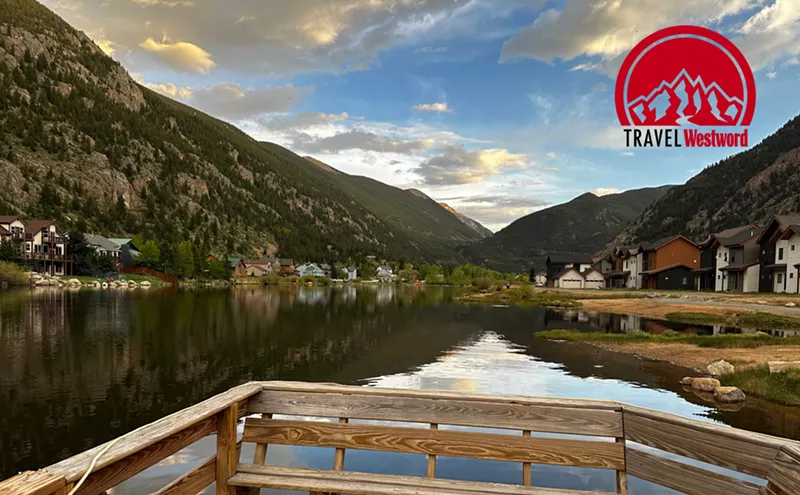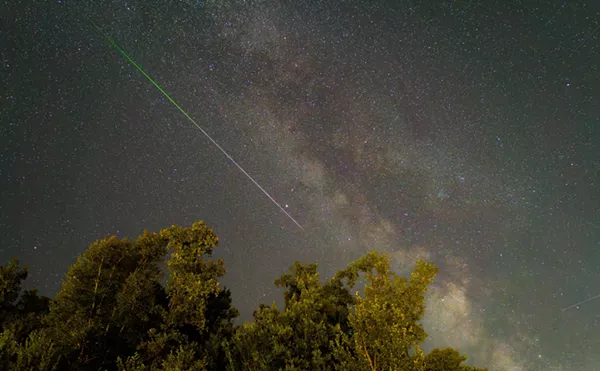Rock climbers in Colorado often feel like the proverbial kid in a candy store. Everywhere the eye can see are rock routes of all difficulties and lengths. Boulder alone has more rock climbs than many states. Factor in all the other climbs in the area, and you could easily devote an entire lifetime to trying to climb every route in the state, climbing 365 days a year, and still not hit them all. Of course, every climber has his or her favorites, but when it comes to moderate routes, some really rise to the top, no pun intended. If you are just getting into climbing, or even if you've been doing it a while and haven't hit these routes, get on 'em!
1) North Ridge of Montezuma Tower, Garden of the Gods (5.7)
Some routes in Colorado are defined by their length, others by the quality of the moves. A very few are defined by the exposure. Of those, it's rare to find one that is only about 150 feet long, and 5.7 to boot, yet the North Ridge of Montezuma tower in the Garden of the Gods claims that prize. The rock in the Garden is soft sandstone, and early climbers drilled holes and pounded pitons in for protection. You'll pass one such pin on this route, which follows a knife edge up an incredibly thin fin of rock to the summit of the tower. The Tower itself looks like a shark's fin thrust from the ground. The route can be done in one long pitch with a 60 meter rope, but most people choose to do it in two pitches, belaying from a three-pin anchor about 100 feet up. Rappel from the summit via a three pin anchor. Some footholds may have been drilled on this route by military personnel doing training moves before the documented first ascent by Harvey Carter in 1950. Rumor has it that somebody has actually carved a few more steps in recent years, a serious no-no.
2) Classic Dihedral, aka Crack of Delight, Bucksnort Slab, South Platte (5.7)
This route may just be the perfect crack climb, topped only by Supercrack of the Desert. If a rock climber could beg the divinity to create a crack climb in granite, it would be something like Classic Dihedral. Located just outside of Pine, the Bucksnort Slab is a perfect one-pitch slab of granite, and Classic Dihedral splits the middle of the face. The crack starts out with perfect hand jams, with the shallow dihedral providing stems for the feet. A little higher, it goes to finders, than hands again, then fists, and ends with an offwidth/layback combination to a two bolt belay from which you can rappel 150 feet to the ground. On a warm fall or spring day, there is, perhaps, no better climb.
3) Bastille Crack, Eldorado Canyon (5.7+/5.8-)
Eldorado Canyon has classic routes of all ability levels, such as the Naked Edge. However, the ultra classic route in Eldorado is the Bastille Crack. As a bonus, the Bastille faces north, so even on hot summer days, it's shaded and can be climbed. The downside to the Bastille is it is right on the road, and people often queue up on it in the summer. It's not uncommon to see three or more parties waiting to do it. Nevertheless, this is a must do climb. Like Montezuma Tower, the Bastille was first ascended by U.S. Army climbers, but Stan Shepard and Allen Bergen made the first free ascent in 1957. The traditional crux comes in the first 60 feet, and the holds have worn down some from all the traffic. A two bolt belay at the top of the pitch is often bypassed to make for a full-length first pitch. Above that is a second crux moving over a shallow overhang, a pitch some people underestimate. The fourth pitch wanders left up some shallow corners, and the final pitch offers options of 5.4 to 5.8. On top of the Bastille, look across South Boulder Creek to the Wind Tower and marvel at the boldness of Ivy Baldwin, who tightrope walked the cable many a time. From the summit, you can walk south along the rock to a descent trail.
4) East Face Third Flatiron (5.4)
Legendary climber and Patagonia founder Yvon Chouinard once called it the best beginner climb in the country. It was first climbed by Floyd and Earl Millard in 1906. Since then, it's been the scene of numerous stunt climbs, including naked ascents and one ascent on roller skates. Despite these degradations, and the insult of having giant CU letters painted across parts of it, the East Face of the Third Flatiron reigns supreme when it comes to classic easy climbs. Eight pitches on bomber rock titled at a 50 degree angle, with holds everywhere. The last pitch, with Boulder and CU dropping away over 1000 feet below your feet while you make the crux 5.4 friction moves, is stunning. Descent from the Third involves a tricky series of rappels down the south and west faces, so before you take someone up for their very first rock climb, make sure they are ready for exposure and can rappel.
5) Spiral Route, Notchtop, Rocky Mountain National Park (5.4)
For a great intro to alpine rock routes, take on the Spiral Route on Notchtop. The route has a friendly southeastern exposure, so the rock warms up nicely in the summer. The route gets its name from the fact that it spirals all the way around Notchtop, ending in the namesake notch, before moving on to a spectacular tower summit. The middle ramp is a long, wide, grassy platform. The crux moves are on the first pitch, but there is a sting in the tail on the exit to the Notch, especially when, as in one of my ascents, a rain and hail storm comes up as you start the pitch in only your trail shoes. The descent involves 1000 feet of fourth class and low fifth class traversing on a wildly exposed ridge to a sandy and rocky descent gully.
4) East Face Third Flatiron (5.4)
Legendary climber and Patagonia founder Yvon Chouinard once called it the best beginner climb in the country. It was first climbed by Floyd and Earl Millard in 1906. Since then, it's been the scene of numerous stunt climbs, including naked ascents and one ascent on roller skates. Despite these degradations, and the insult of having giant CU letters painted across parts of it, the East Face of the Third Flatiron reigns supreme when it comes to classic easy climbs. Eight pitches on bomber rock titled at a 50 degree angle, with holds everywhere. The last pitch, with Boulder and CU dropping away over 1000 feet below your feet while you make the crux 5.4 friction moves, is stunning. Descent from the Third involves a tricky series of rappels down the south and west faces, so before you take someone up for their very first rock climb, make sure they are ready for exposure and can rappel.
5) Spiral Route, Notchtop, Rocky Mountain National Park (5.4)
For a great intro to alpine rock routes, take on the Spiral Route on Notchtop. The route has a friendly southeastern exposure, so the rock warms up nicely in the summer. The route gets its name from the fact that it spirals all the way around Notchtop, ending in the namesake notch, before moving on to a spectacular tower summit. The middle ramp is a long, wide, grassy platform. The crux moves are on the first pitch, but there is a sting in the tail on the exit to the Notch, especially when, as in one of my ascents, a rain and hail storm comes up as you start the pitch in only your trail shoes. The descent involves 1000 feet of fourth class and low fifth class traversing on a wildly exposed ridge to a sandy and rocky descent gully.












